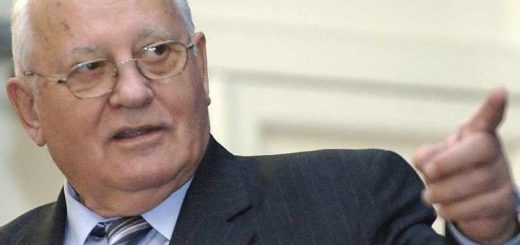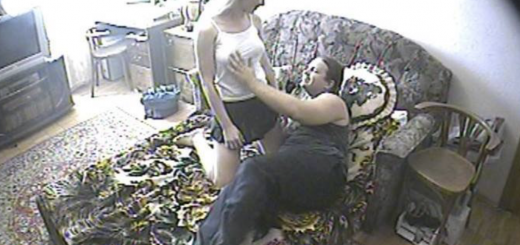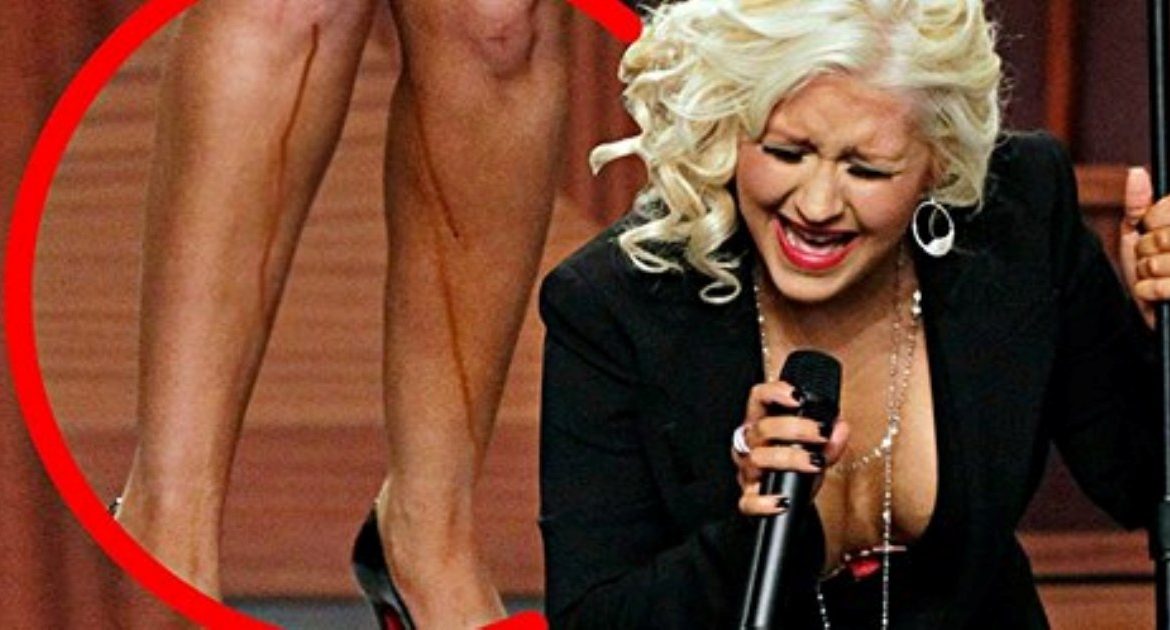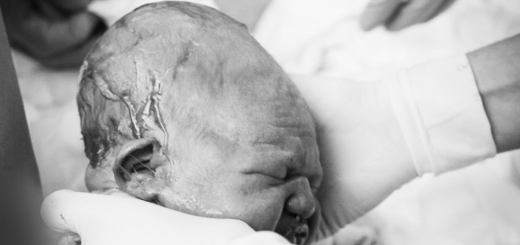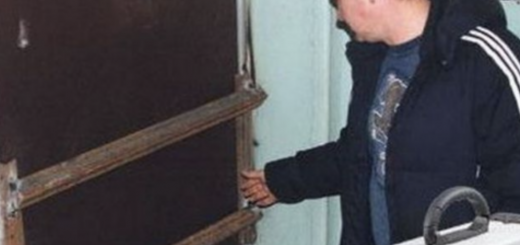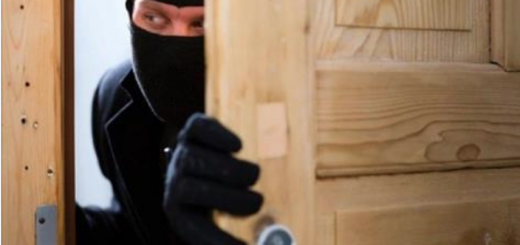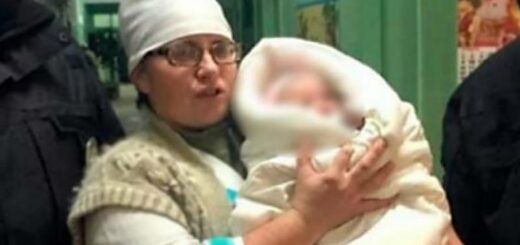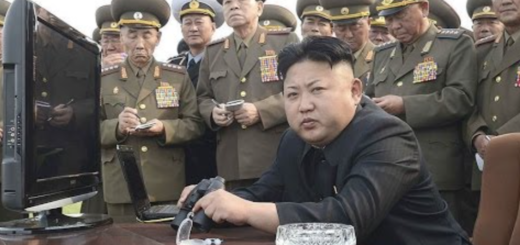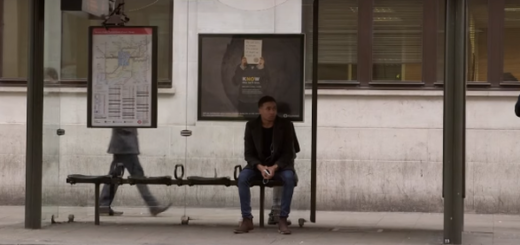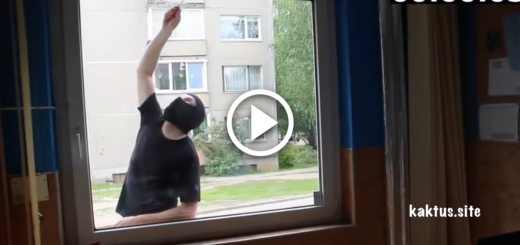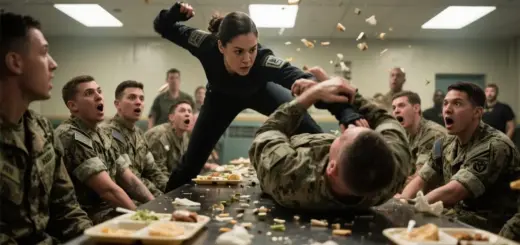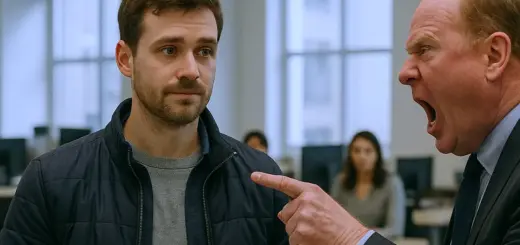The technical officer manning the control station worked furiously at his console. “Sir, there’s been a malfunction in the simulation system. The fire suppression protocols have activated with actual incendiary components rather than training markers.”
“Evacuate the structure immediately!” General Hayes ordered.
“Negative,” the technician responded, his voice tight with concern. “The malfunction has triggered a security lockdown. Standard access points are sealed until the system can be reset from the main control node inside the structure.”
On the monitors, operators could be seen reacting to the emergency. Their training exercises were forgotten as actual smoke began to fill corridors and rooms. Most teams moved efficiently toward alternative exit points, their special operations training seamlessly transitioning from simulation to real-world emergency response. But one team found themselves in a rapidly deteriorating situation. Lieutenant Thade and three other operators were trapped in a section where the smoke was densest, their path to extraction blocked by a security door that had sealed during the malfunction.
“Get me communications with Thade’s team,” Hargrove ordered.
“Comms are intermittent due to the security lockdown,” the technician reported. “Last transmission indicated they were seeking alternative egress through the east utility shaft.”
On another monitor, Arwen’s team could be seen moving with purpose, not toward an exit, but deeper into the structure. Their movement pattern suggested a deliberate approach to the control node, the only location where the malfunctioning systems could be manually overridden.
“What is Blackwood doing?” Hargrove demanded. “Her team should be evacuating.”
General Hayes watched with focused interest. “She appears to be addressing the source of the problem rather than its symptoms.”
The monitoring system flickered as smoke increasingly obscured the camera views. Partial images showed Arwen’s team encountering an unexpected obstacle: a collapsed ceiling section blocking their path to the control node. Without hesitation, Arwen redirected her team, sending them toward an evacuation route while she continued alone.
“That’s a direct violation of protocols,” Hargrove noted with sharp disapproval. “No operator proceeds without team support in hazardous conditions.”
Hayes made no comment, his attention fixed on the monitors as they tracked Arwen’s progress through the increasingly dangerous environment. Her movements displayed none of the hesitation or uncertainty that might be expected in such conditions. Instead, she navigated the smoke-filled corridors with the confidence of someone operating from a perfect mental map of the complex structure.
When she encountered the sealed door separating her from Thade’s trapped team, she bypassed the electronic security system with techniques not taught in any naval special warfare training program. The door released, allowing the trapped operators to move toward safety.
“How did she override that security protocol?” Hargrove asked, unable to completely mask his surprise.
Neither Hayes nor the technicians offered an explanation. All attention now focused on Arwen as she finally reached the control node. Despite the increasingly hazardous conditions, her movements remained precise and economical as she executed a complex sequence of commands that gradually restored normal system function. Within minutes, the facility’s fire suppression systems activated properly, clearing the smoke and allowing a full evacuation of all personnel. Emergency medical teams entered to assess any potential injuries, finding remarkably few given the severity of the malfunction.
In the aftermath, operators gathered at the medical checkpoint for evaluation. Lieutenant Thade, still being treated for minor smoke inhalation, watched as Arwen calmly reported to Commander Coltrane. Nothing in her demeanor suggested she had just executed an emergency response that should have been beyond the capabilities of a standard SEAL officer.
“How did you know the bypass sequence for those security doors?” Thade asked when she passed near his treatment station. “That’s proprietary technology. Even I don’t have that clearance.”
Arwen paused, meeting his gaze directly. “Sometimes training includes elements that don’t appear in standard documentation, Lieutenant.”
“That wasn’t training,” he pressed. “Nobody gets trained on proprietary security overrides except…” He trailed off, a new understanding dawning in his expression as he studied her with fresh assessment.
“Except who, Lieutenant?” she asked quietly.
Before he could respond, Admiral Hargrove approached, his face set in grim lines. “Lieutenant Commander Blackwood, my office. Now.”
The Admiral’s office reflected his personality: austere and meticulously organized, with nothing out of place. Naval special warfare memorabilia lined the walls, a testament to a career spent defining what it meant to be among America’s elite maritime operators.
“Explain yourself,” Hargrove demanded once the door closed behind them. “How did you access those security protocols?”
“Standard emergency override procedures, Admiral,” Arwen replied, standing at perfect attention.
“Don’t insult my intelligence, Commander. Those weren’t standard overrides. That was a proprietary sequence known only to system developers and certain specialized units.”
“Then perhaps my previous assignments included relevant training, sir.”
Hargrove moved around his desk, deliberately invading her personal space. “I’ve reviewed every accessible record of your service. Annapolis graduate, naval intelligence for three years, a lateral transfer to surface warfare, then selection for the female integration pilot program. Nowhere in that history is there any indication of specialized training in advanced security systems.”
“Not all training appears in accessible records, Admiral.”
“I have the highest possible security clearance,” he snapped, frustration evident in his voice.
“Yes, sir, you do,” she acknowledged, the simple statement carrying implications that visibly unsettled him.
Hargrove stepped back, reassessing the officer before him with growing suspicion. “Who are you really working for, Blackwood? The CIA? The DIA? Some shadow unit I’m not supposed to know about?”
“I’m a naval officer assigned to complete this training program, sir. Nothing more.”
“We both know that’s not true.” He studied her face, searching for any crack in her composed exterior. “The culmination ceremony is in two days. Several very senior officials from various service branches will be attending, specifically to observe the female integration program’s results.”
“Yes, sir. I’m aware of the schedule.”
“Whatever game you’re playing ends now, Commander. I won’t allow my training center to be used as a stage for someone else’s agenda.”
“No games, Admiral. Just completing the mission as assigned.”
Something in her phrasing caused Hargrove to pause, a flicker of uncertainty crossing his features before his expression hardened again. “You’re confined to quarters until further notice. I’m initiating a full security review of your presence in this program.”
“That would violate direct orders from Naval Special Warfare Command regarding the pilot program’s integrity, sir.”
“I am Naval Special Warfare in this command, Commander,” he replied coldly, “and I will not be manipulated by whatever shadow game you’re playing.”
Their confrontation was interrupted by a sharp knock at the door. Without waiting for permission, Captain Reeve entered, her expression professionally neutral, though tension radiated from her posture. “Admiral, General Hayes has requested Lieutenant Commander Blackwood’s presence for an operational debrief regarding the facility malfunction.”
Hargrove’s jaw tightened visibly. “The Commander is currently engaged in a security review, Captain.”
“I understand, sir. However, the General was quite specific about needing her immediate input on the technical aspects of the system override she implemented.”
The standoff stretched for several seconds before Hargrove relented with poor grace. “Very well. But this conversation isn’t finished, Commander.”
“Of course not, sir,” Arwen replied with perfect military courtesy that somehow managed to convey nothing of submission.
As they left the Admiral’s office, Reeve led Arwen not toward any meeting with General Hayes, but to a secure communication room in the facility’s restricted section. “We have a problem,” Reeve said once they were alone in the secured space. “The malfunction wasn’t a malfunction. It was deliberate sabotage of the training systems.”
“Are the ghosts making a move?” Arwen asked, her composure never wavering despite the implications.
“Unclear, but the sabotage utilized access codes that should have been disabled after the Songwon incident. Codes specifically tied to Admiral Hargrove’s authentication profile.”
Arwen absorbed this information with the calm assessment of someone accustomed to processing critical intelligence under pressure. “He’s forcing our hand.”
“Or someone is forcing his,” Reeve countered. “The timing is too perfect. Two days before the ceremony, just as key observers are arriving.”
“Has the Admiral’s movement been tracked since the incident?”
“Continuously. He hasn’t attempted any unauthorized communications.”
Arwen considered this. “Then either he’s working with someone inside the facility, or someone else is using his access credentials.”
“Either possibility represents a critical security breach,” Reeve noted. “We need to accelerate the timetable.”
“No,” Arwen decided after a moment’s consideration. “Changing plans now would alert whoever is making these moves. The ceremony remains our best opportunity to force an exposure.”
“It’s also the highest-risk scenario, with multiple flag officers and foreign observers present.”
“Which is precisely why it’s the perfect moment,” Arwen countered. “No one would attempt something truly catastrophic with that level of security present. This is about manipulation and exposure, not direct action.”
Reeve studied her colleague’s face, seeing the absolute conviction behind her calm exterior. “Seven years is a long time to carry this mission, Arwen.”
“Some debts can only be repaid in full.”
Before Reeve could respond, the secure communication system activated, indicating an incoming message with the highest priority designation. The screen displayed simple text: Widow protocol initiated. Stand by for package delivery.
Both women recognized the significance immediately. The endgame had begun, whether they were ready or not.
The ceremony hall gleamed under carefully directed lighting. Naval Special Warfare Command had spared no expense for this particular culmination event, transforming the utilitarian training center auditorium into a space worthy of the distinguished guests in attendance. American flags flanked a stage where a ceremonial display featured the SEAL trident prominently. Officers in dress uniforms and foreign military attachés in their respective formal attire created a sea of medals, ribbons, and insignia representing decades of combined special operations experience.
Admiral Hargrove stood center stage, resplendent in his full dress uniform, with rows of decorations testifying to a legendary career. Behind him, Commander Coltrane and Captain Reeve occupied positions of prominence alongside other senior officers. The graduating operators sat in the front row, their posture reflecting the discipline that had carried them through the grueling Advanced Combat Leadership Program. As the formal proceedings began, the atmosphere carried the weight of tradition and earned respect. Admiral Hargrove approached the podium, his weathered features solemn as he addressed the assembled crowd.







